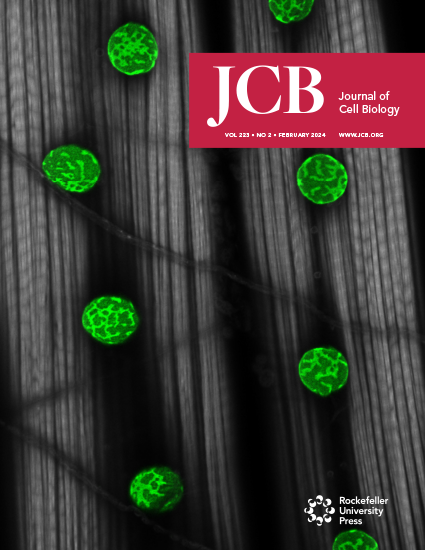Myosin 15 participates in assembly and remodeling of the presynapse.
IF 6.4
1区 生物学
Q1 CELL BIOLOGY
引用次数: 0
Abstract
The assembly and remodeling of presynaptic specializations are of crucial importance for circuit development and adaptive behaviors. However, the mechanisms by which presynaptic material is locally distributed within synaptic terminals and across consuming active zones remain poorly understood. In this study, we identify the conserved unconventional class XV myosin, Myo15, an actin motor, as a novel regulator of presynaptic assembly and remodeling in Drosophila. Myo15 localizes to the local actin and microtubule network at synaptic terminals. Depletion of Myo15 resulted in smaller individual active zones, increased active zone density, and irregular terminal morphology, while its overexpression enlarged individual active zones and promoted synaptic terminal growth. Myo15 was found to modulate the actin meshwork, and deletion of its microtubule-binding MyTH4 domain rendered the protein nonfunctional. Furthermore, Myo15 was essential for presynaptic functional homeostatic plasticity and memory consolidation. These findings suggest that Myo15 plays a critical role in the assembly and remodeling of presynaptic active zones.肌凝蛋白15参与突触前的组装和重塑。
突触前特化的组装和重塑对神经回路的发育和适应行为至关重要。然而,突触前物质局部分布在突触末端和跨消耗活动区的机制仍然知之甚少。在这项研究中,我们确定了保守的非常规类XV肌凝蛋白Myo15,一种肌动蛋白马达,作为果蝇突触前组装和重塑的新调节剂。Myo15定位于局部肌动蛋白和突触末端的微管网络。Myo15缺失导致个体活动区变小,活动区密度增加,末端形态不规则,而Myo15过表达使个体活动区增大,促进突触末端生长。Myo15被发现调节肌动蛋白网络,其微管结合MyTH4结构域的缺失使该蛋白失去功能。此外,Myo15对突触前功能稳态可塑性和记忆巩固至关重要。这些发现表明Myo15在突触前活跃区的组装和重塑中起着关键作用。
本文章由计算机程序翻译,如有差异,请以英文原文为准。
求助全文
约1分钟内获得全文
求助全文
来源期刊

Journal of Cell Biology
生物-细胞生物学
CiteScore
12.60
自引率
2.60%
发文量
213
审稿时长
1 months
期刊介绍:
The Journal of Cell Biology (JCB) is a comprehensive journal dedicated to publishing original discoveries across all realms of cell biology. We invite papers presenting novel cellular or molecular advancements in various domains of basic cell biology, along with applied cell biology research in diverse systems such as immunology, neurobiology, metabolism, virology, developmental biology, and plant biology. We enthusiastically welcome submissions showcasing significant findings of interest to cell biologists, irrespective of the experimental approach.
 求助内容:
求助内容: 应助结果提醒方式:
应助结果提醒方式:


